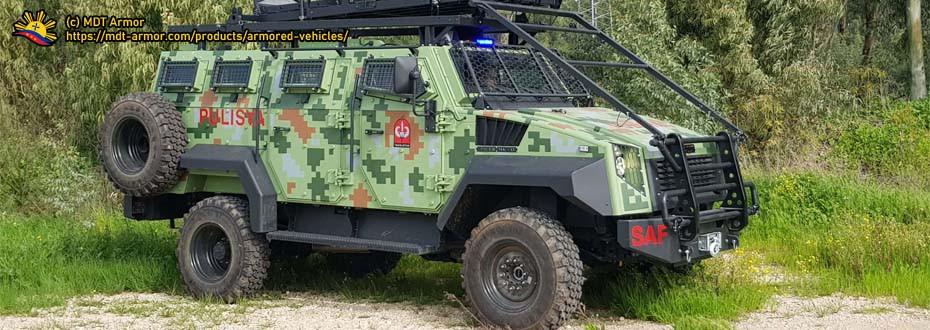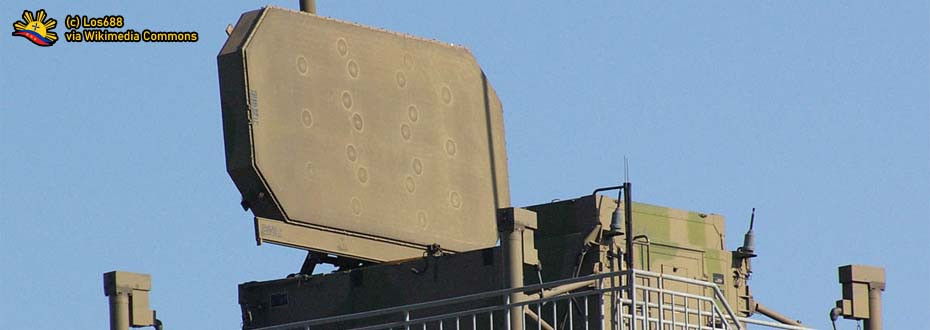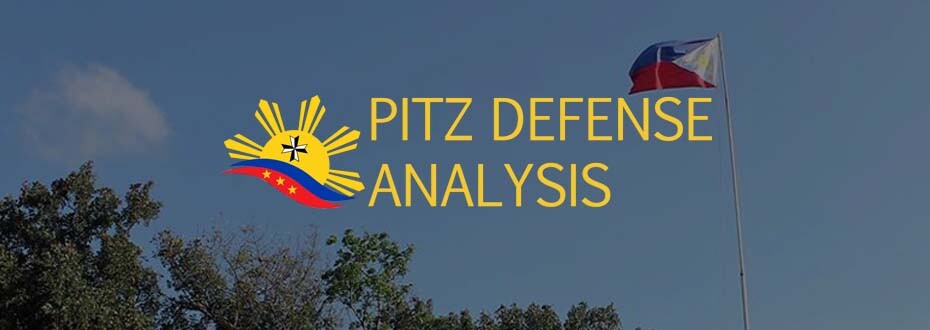 |
The Cessna C208CX Grand Caravan Aircraft is currently the mainstay fixed-wing aircraft of the Philippine Coast Guard.
Image Source.
|
The Philippine Coast Guard’s annual budget, just like those for the Armed Forces of the Philippines, always comes with an ongoing evolution, a focus primarily on its mandate for external defense and orientation to that phase of national security.
This article comes as the continuation of the discussions surrounding the 2025 General Appropriations Act, particularly pointing to its implications in relation to the current national defense efforts of the Philippine government, through the Department of National Defense and the Armed Forces of the Philippines.
To recall, the Revised AFP Modernization Program received an important increase, although the bulk of its allotment aligns at Un-programmed Appropriations, depending on annual government revenue.
As the purpose of this writeup also delves in the country’s push and resolve on its territorial integrity, sovereignty, and national interest that encompasses beyond the scope of the core mandate of the Armed Forces of the Philippines, the duties and responsibilities of the Philippine Coast Guard in the West Philippine Sea also plays a role that the country showed its presence and perseverance in what’s rightfully part of the Philippine Exclusive Economic Zone, even before a more powerful adversary.
With an increasing trend of China’s assertiveness in securing what they claim as ‘theirs’ through the use of their own coast guard, maritime militia, and even naval assets belonging to the People’s Liberation Army Navy at sea, the budget encompassing the Philippine Coast Guard and the projects that the Department of Transportation at-large in the West Philippine Sea are helpful in cementing the country’s interest in West Philippine Sea, securing its marine resources for the citizenry to benefit.
Coming as usual, this article will delve into the plans, programs, and projects presented under the 2025 General Appropriations Act for the Philippine Coast Guard, while relating to the ongoing developments and that the maritime law enforcement agency has at present, such as in purchasing additional white hull assets as part of its fleet expansion. This, coupled with new facilities getting constructed, aims to help the agency uphold its core mandate, especially in increased tensions in the West Philippine Sea.
THE PCG BUDGET IN THE 2025 NATIONAL EXPENDITURE PROGRAM
 |
| The budget breakdown of the Philippine Coast Guard's National Expenditure Program, spanning three (3) years. |
At a glance, there is a positive trend in the overall allotments presented for the Philippine Coast Guard’s financial requirements under the
2025 National Expenditure Program, as it has highlighted the growing responsibility of the maritime law enforcement agency in enforcing its presence in areas like the West Philippine Sea, along with its efforts to expand its existing Maritime Domain Awareness in securing the Philippine Territorial and Exclusive Economic Zone waters.
The budget of the Philippine Coast Guard in the 2025 National Expenditure Program comes at around Php 31,268,928,000.00 or Php 31.268 Billion, in which it is higher than the 2024’s Php 29,420,681,000.00 or Php 29.421 Billion allotment in the presentation, which itself is higher than the 2023’s Php 21,908,100,000.00 or Php 21.908 Billion allotment. This means that there is at least a 6.39% increase in the 2025 budget, lower than the 25.54% increase in the 2024 proposal as compared to the 2023 budget proposal.
With the positive trend also comes the same picture on the specific expenditure clusters that describe an operational component of a government agency like the Philippine Coast Guard, whereby there’s a general increase on both Personnel Services (PS) and Maintenance and Other Operating Expenses (MOOE), while there’s a general decrease on the maritime law enforcement’s Capital Outlay (CO) allotments as compared to the previous year. The breakdown of each expenditure cluster comes as follows.
The overall allotments for Personnel Services (PS) for basic salary and benefits for the Philippine Coast Guard’s uniform and civilian personnel composition comes at around Php 23,112,726,000.00 or Php 23.112 Billion, of which it comprise the largest percentage of the agency’s 2025 National Expenditure Program allotments that is at around 73.92% of the total budget allotted in this presentation. It is higher than 2024’s Php 19,739,399,000.00 or Php 19.739 Billion, and 2023’s Php 19,857,096,000.00 or Php 19.857 Billion.
Aside from Personnel Services or PS, another thing to point out is the composition of allotments under the Maintenance and Other Operating Expenses or MOOE, whereby it has the proposed figures under the National Expenditure Program for 2025 amounting to Php 7,086,919,000.00 or Php 7.086 Billion, composing about 22.66% of the total proposed budget in this presentation. It is higher than 2024’s Php 4,744,045,000.00 or Php 4.744 Billion, and 2023’s Php 3,571,565,000.00 or Php 3.572 Billion.
Completing this composition is the budget allotments under Capital Outlay or CO, whereby it saw a decrease in figures as compared to the first two (2) budgetary clusters, as discussed. For the year 2025, the figures provided under the National Expenditure Program of the said fiscal year amounts to Php 1,081,228,000.00, or Php 1.081 Billion, comprising only about 3.46% of the total budget. For comparison, figures for 2024 and 2023 are at around Php 4,744 Billion and Php 1.327 Billion, respectively.
The general increase of both
Personnel Services (PS) and
Maintenance and Other Operating Expenses (MOOE) sees as the ongoing increase on the number of hired personnel to the maritime law enforcement agency, along with the operational and repair requirements for the agency’s facilities and white hull vessels that is likely to receive in the succeeding years. While the
National Expenditure Program provides the amounts as proposed at a glance, the 2025 General Appropriations Act gives a full picture.
THE ACTUAL BREAKDOWN UNDER THE 2025 GENERAL APPROPRIATIONS ACT
 |
| Here is the actual breakdown of allotments for the Philippine Coast Guard under the 2025 General Appropriations Act. |
As the budgetary figures provided under the 2025 National Expenditure Program comes as an initial and also a sneak peek into what will the budget of a certain government agency will look like, the 2025 General Appropriations Act provide as the final budgetary figure that a government agency like the Philippine Coast Guard will see as a basis for its allotment, which will be its budget to use for its personnel and operating expense requirements for the said fiscal period.
The budget of the Philippine Coast Guard in the 2025 General Appropriations Act comes at around Php 33,251,928,000.00 or Php 33.252 Billion, which is actually higher than the figures presented under the National Expenditure Program of the maritime law enforcement agency with the aforementioned figures provided in this writeup. This means that the budget of the Philippine Coast Guard saw an increase of Php 1,983,000,000.00 or Php 1.983 Billion.
Going further, the breakdown between the expenditure cluster goes as follows - Php 23,100,781,000.00 or Php 23.101 Billion for Personnel Services or PS, Php 7,086,919,000.00 or Php 7.087 Billion for Maintenance and Other Operating Expenses or MOOE, and Php 3,064,228,000.00 or Php 3.064 Billion for Capital Outlay or CO, totaling to the aforementioned figure that saw an increase as compared to the proposed ones under the National Expenditure Program.
This means that the budget for the Personnel Services comes with a minor decrease of Php 11,945,000.00, likely pointing to the number of personnel separating from the service through multiple means such as resignation, transfer of agency, reaching the mandatory age for retirement, or applying for the optional retirement package. Budgetary numbers provided usually correspond to the actual number of personnel in service, with data originating from the agency’s Human Resource directorate.
Meanwhile, there are no changes on the overall allotment to the Philippine Coast Guard’s own Maintenance and Other Operating Expenses (MOOE) requirements, which stayed at Php 7,086,919,000.00 or Php 7.087 Billion for both the 2025 National Expenditure Program and the 2025 General Appropriations Act.
This means that their requirements for upkeep facilities and operating PCG equipment lines up into what should be their actual expenditure projections on the said fiscal period.
Finally, the Philippine Coast Guard’s Capital Outlay, under the 2025 General Appropriations Act, saw more than a twofold increase, as it saw the increase from Php 1,081,228,000.00 or Php 1.081 Billion in the 2025 National Expenditure Program increased into Php 3,064,228,000.00 or Php 3.064 Billion, with a difference being at Php 1,983,000,000.00 or Php 1.983 Billion. This will enable the agency to improve its capabilities by acquiring more hardware and building new facilities.
From the provided figures, the overall increase in allotments for the Philippine Coast Guard under the 2025 General Appropriations Act directly attributed to the increase in allotments under its Capital Outlay (CO) funding cluster, while there is a decrease and no change on the allotments of both the Personnel Services (PS) and Maintenance and Other Operating Expenses (MOOE), respectively.
DOTR'S WEST PHILIPPINE SEA PROJECTS IN 2025
 |
Pag-asa island now comes with a hangar and an air traffic control tower.
Screen grab from ABS-CBN News Channel. |
As the Philippine Coast Guard falls under the organizational jurisdiction of the Department of Transportation or DOTR, it is as well worth discussing and delving with the projects that the transportation department have that has a relation with national security push, particularly on matters that correlates to the entire government’s push into cementing its presence in highly contested areas like the Kalayaan Island Group in the West Philippine Sea.
Based on the projects list provided by the 2025 General Appropriations Act for the earmarked programs set by the Department of Transportation or DOTR, one highlighted project on the list is the Airport Development and Expansion of Pag-Asa Island Airport (in Kalayaan Island Group),
which amounts to Php 1,650,000,000.00, or
Php 1.650 Billion Pesos. This budget is likely to provide continuous work on the airport facilities on the island, such as the air traffic control building and hangar facilities (see image above).
Another highlighted project is the
Pag-Asa sheltered port project amounting to
Php 300 Million, which refers to the dredged part of the island that can accommodate Philippine vessels of both civilian and government enforcement in nature, making it convenient to provide the much needed sustainment supplies for the troops and inhabitants of the island, along with an immediate deployment of heavy equipment and armaments that cement the country’s presence in an island part of the Kalayaan Island Group.
Finally, completing the list is the construction of Sheltered Port at Lawak Island, which is part of the Kalayaan Island Group municipality as the Pag-Asa island itself. Currently, the island, internationally named as Nanshan Island, comes with a small contingent of Philippine Coast Guard and Armed Forces personnel deployed in the area, and having a sheltered port in the island will help not only to cement the country’s presence but also to give added protection among Filipino fisherfolk during harsh storms.
Amounting to Php 1,080,000,000.00 or Php 1.080 Billion, the Phase 2 of the construction of a Sheltered Port at Lawak island is the continuation of what has already invested there,
whereby an amount of Php 800,000,000.00 or
Php 800 Million has already provided for the construction of the facility as part of the 2024 General Appropriations Act. Likewise, both the airport expansion and the sheltered port on Pag-Asa island are a mere continuation of the plans earmarked by the Transportation Department in prior years.
All the aforementioned projects aimed to improve not only the well-being of the troops and inhabitants within the Kalayaan Island Group in the West Philippine Sea, but it gives additional presence and resolve that the Philippine government and citizenry at-large provides attention and added support in protecting the country’s national interest and sovereign rights in the West Philippine Sea area, all of which are within bounds of the
1982 United Nations Convention on the Law of the Sea or UNCLOS.
Coupled with the current efforts by both the Philippine Coast Guard and the Armed Forces of the Philippines to improve their capabilities further for territorial defense purposes, the projects set by the Department of Transportation as mentioned play a vital role in providing support in further improving and
fortifying the Philippine positions in the West Philippine Sea, all despite having incursions from both the China Coast Guard together with accompanying Chinese Maritime Militia ships.
LOOKING FORWARD
 |
A scale model of the HDP-500 OPV as presented by HD Hyundai during the ADAS 2024 Exhibition.
File Image.
|
The budget of the Philippine Coast Guard in the 2025 General Appropriations Act, as opposed to its proposals under the 2025 National Expenditure Program, shows that the budget allotment increase, especially on its Capital Outlay related expenditures, are helpful for the maritime law enforcement agency under the Department of Transportation to further fulfill its mandate, especially that it plays a crucial role as the current frontline component in challenging Chinese elements in the West Philippine Sea.
The increase fully reflects the general trend on its budgetary requirements, all of which saw a constant increase on its needed budget allotments through encompassing years mentioned in the first parts of this writeup.
The trend as presented is not that surprising, given that there is also a general increase of white hulls entering the service, along with the establishment of new facilities and recruiting the pool of aspiring applicants that wanted to join the service.
As mentioned earlier on the detailed breakdown of the expenditure cluster of the Philippine Coast Guard’s own budget, the numbers do not cover any soft loan or similarly arranged scheme that correlates to the agency’s improvement of its own capabilities, particularly to the recent purchase of Japanese-made Multirole Response Vessels and
additional Teresa Magbanua-class MRRVs, all of which having the JICA Official Development Aid loan as the source of funds.
Adding to this is the ensured continuity with the ongoing rehabilitation and facility improvement projects in various Philippine outposts in the West Philippine Sea that is currently defined as part of the Kalayaan Island Group municipality of the Province of Palawan.
Pag-Asa island’s current improvement of both of its airport and sheltered port emphasizes the importance of those facilities that increase the flow of logistics on goods, supplies, and much-needed goods from the Philippine mainland.
Aside from Pag-Asa island,
the improvement in Lawak island, which is another Philippine outpost in the West Philippine Sea and as part of Kalayaan Island Group, also gives expanded presence for the country’s resolve in ensuring its national interest within its designated Exclusive Economic Zone or EEZ, whereby the national government sees its importance that the said projects have included in the 2025 budget of the Department of Transportation that also benefiting the country’s defense prospects.
The role of the Philippine Coast Guard, along with the budgets allocated by the Department of Transportation in the West Philippine Sea projects, shows that the country’s national defense efforts encompass the national government at-large, and not just the ones in the front-lines like the Armed Forces of the Philippines.
The support among government agencies ensures that territorial integrity also comes with improving presence by providing better infrastructure for the assigned outposts to benefit.
To access the following documents, here are the following links below.


























%20-%20PDA.jpg)







%20Launch%20-%20PDA.jpg)

